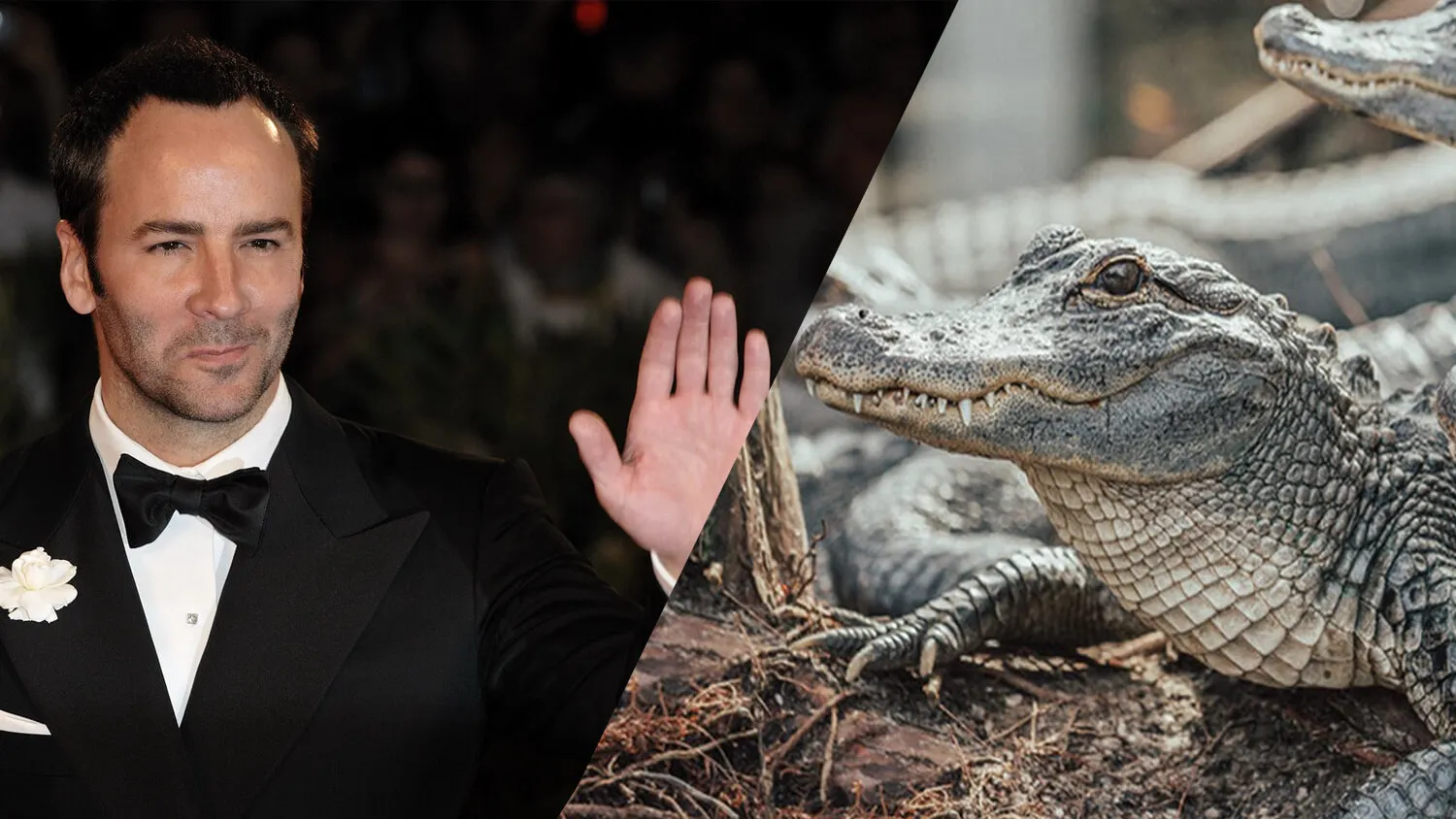When we think of fashion, we often picture glitzy runways, glossy magazines, and glamorous celebrities. However, behind the dazzling appearance of the fashion industry, there lie some disturbing truths in regard to the sourcing of materials and, in some cases, animal exploitation and cruelty. According to Surge Activism, a non-profit organization for animal rights, a shocking estimated 1.4 billion animals are killed every year to supply leather for the fashion industry. Wild animals are trapped, shot, or confined in barren cages until their slaughter, with all their suffering for the sake of the latest must-have coats, bags, or shoes. Although these wild animals, including crocodiles, snakes, and minks, are sentient like every other animal species, including humans and our beloved cats and dogs; yet, only a few voices speak up against animal cruelty in the fashion industry. In my opinion, fashion companies should stop selling products made from exotic animals because these sources are not sustainable, they can severely disrupt the wildlife balance in their respective ecosystems, and their use raises ethical concerns.
Firstly, fashion companies should stop selling products made from exotic animals because these sources are not sustainable. Many such animals have slow reproductive rates, making it difficult for populations to recover once they are hunted or poached. For example, crocodiles, whose skins are commonly used in the production of luxury fashion items such as shoes and handbags, are known for having a slow rate of reproduction. According to a research paper published in 2017 by Dr. Venetia Briggs-Gonzalez, a wildlife biologist at the University of Florida, female crocodiles typically reach sexual maturity at around 10 to 12 years of age, but they only reproduce once every 1 to 3 years. Compared to other reptiles, crocodiles have a relatively long incubation period, and a relatively low hatching success rate as well. Moreover, some species, such as the Siamese crocodile and Chinese alligator, are already critically endangered. Overexploitation of these animals for the fashion industry exacerbates their decline, which demonstrates unsustainability. Therefore, fashion companies should not continue to sell products made from exotic animals because relying on hunting these animals is not sustainable.
Secondly, fashion companies should stop selling products made from exotic animals because the production of exotic animal products can severely disrupt the wildlife balance in their ecosystems. According to Borgen Magazine, an influential humanitarian media outlet, the hunting and poaching of these animals can often take place in developing countries, where enforcement of regulations is weak. Such lack of oversight can lead to overhunting and poaching, which can lead to a decline or even extinction of the targeted species. “We don’t need products from the wild for luxury fashion as it severely damages wild ecosystems,” said Dr. Sandra Altherr, co-founder of the German charity Pro Wildlife, on Germany’s DW News. It is evident that the extinction of even one species can greatly disrupt an ecosystem, as it can affect the survival of interrelated species as well. Therefore, such a disruption has ripple effects on the food chain and ultimately could cause harm to human beings as well. Hence, fashion companies should stop selling products made from exotic animals because the production of exotic animal products can severely disrupt the wildlife balance.
Finally, fashion companies should stop selling products made from exotic animals because ethical concerns surrounding their use cannot be ignored. These animals are often subjected to inhumane and cruel conditions, from being cruelly hunted or poached to being kept in small and cramped conditions during the time between their capture and slaughter. Many fashion companies have come under fire for their use of animal products, with accusations of inhumane treatment and exploitation. In 2016, People for the Ethical Treatment of Animals (PETA) published graphic videos from Vietnam of crowded crocodile farms, where animals were kept in poor conditions. The farms supply European luxury goods brands, they say. The organization also says snakes are nailed to trees and skinned alive because it is believed this keeps their skins supple, and some snakes take hours to die. Johanna Fuoß from PETA Germany said in the same interview by DW news that “there’s no kind or humane way of killing an animal,” adding that skin being “responsibly supplied” means nothing to the animal itself. “Millions of animals die for the exotic skin trade every year and every individual animal is going through the same process of being killed in a very agonizing way.” Therefore, it is unethical to slaughter exotic animals for fashion products and thus, such products should not be sold by fashion companies.
Supporters of exotic animal fashions may argue that such products are more durable and safer for consumers. They may say that the consumer, and the environment, benefit from fashions that last longer, and that clothes made from man-made materials may contain toxins that release cancer-causing chemicals or have other negative health effects. However, these arguments do not justify the exploitation of vulnerable and endangered animals. There are alternative materials that are just as luxurious and can be produced in a more sustainable and ethical way. Reports issued in June 2013 by eco experts of the CE Delft, an independent research and consultancy organization based in the Netherlands, show that making a mink fur coat emits seven times more carbon dioxide than one faux fur coat. According to the American environmental organization TRVST, faux fur is just as warm and durable as animal fur. Therefore, it is clear that humanely responsible alternatives can do less harm to both the environment and the animals compared to materials that require the deaths of exotic animals. Therefore, fashion companies should stop selling products made from exotic animals and turn to more sustainable and ethical sourcing practices.
In conclusion, fashion companies should stop selling products made from exotic animals due to the lack of sustainability, potential disruption of the wildlife balance, and ethical concerns. The fashion industry must prioritize corporate responsibility and promote ethical and sustainable practices by terminating all production of fashion products made from these exotic animals. We, as consumers, can also play a role by making informed purchasing decisions and supporting companies that prioritize sustainability and ethical practices towards animals. The more people understand the importance of avoiding such products, the lower the demand for those fashions will be, eventually reaching a point where it becomes economically unfeasible for fashion companies to continue to use such cruelly sourced materials. By working together, we can make a positive impact on the environment and animal welfare while still enjoying the luxury of fashion.
 BlogPost
BlogPost